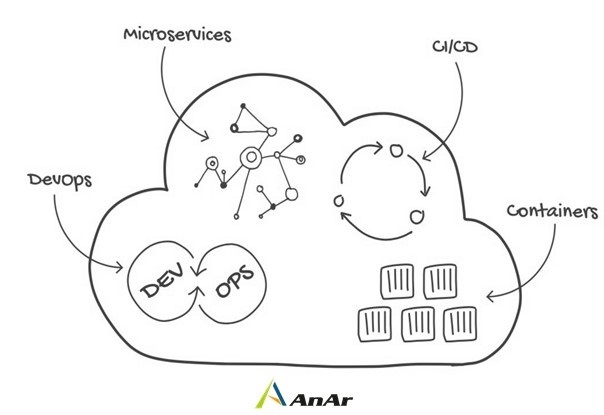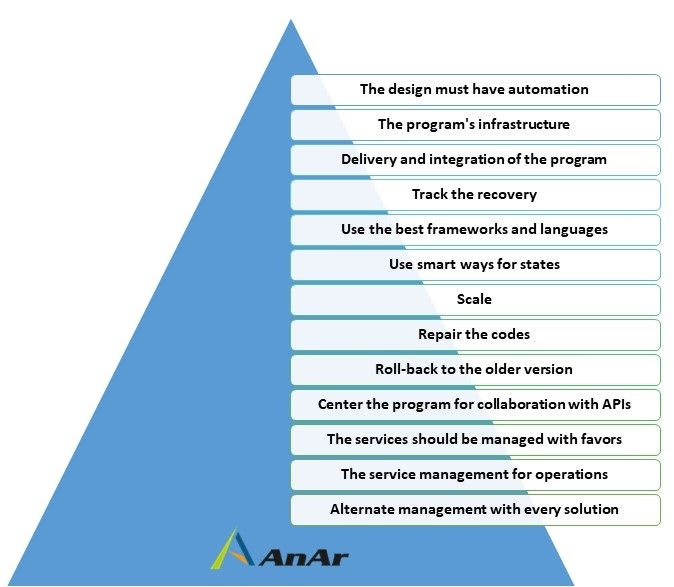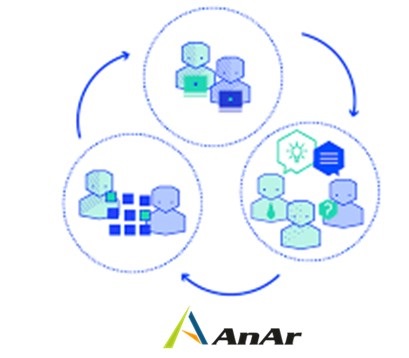If you are a developer, all you want is to run software that helps your customers perform their tasks without getting any issues. Also, you will provide several updates to them to change the services. While checking the software, your customers come up with some feedback that allows you to perform your development and also provide some interesting experience towards the services. Creating a program to run it is the dream of every developer, and cloud native designs allow developers to run the software with the advantages of computing models that work on cloud systems. For a better understanding, let’s move further to understand Cloud Native designs and their working.
What is a cloud native design?
Cloud native is a microsystem development process, which allows developers to create some well-oriented software, that can run on several platforms. Cloud native is based on the “How” pattern of the program.
It means it focuses on “How the applications get their programs and run on different platforms. It is based on a cloud-system that does not need much space to run a specific software type.
The cloud natives are the fast way to introduce the software to the customers to provide them with fast operation and make new ideas to reply to the customers in no time. The cloud native design principles provide an ability to develop an on-demand accessible computing application compatible with modern data.
The cloud native design principle has some features you can understand to create a better program for your customers.
What are these cloud native design principles?
1. The design must have automation
Developers need automation to analyze for some random errors in the program. The cloud native principle makes the automation easy for the components and infrastructure of the program. You can enhance the performance of your software with automation that makes your investment worth the development.
It increases the efforts of the developer to run a successful program with more solutions to its customers. Automation gives a scale to the system for deploying the system to a group of larger people in a short period. There is some common field of the cloud native design principles that you need to care about while automation.
2. The program’s infrastructure
Automate the infrastructure with the program’s creation and an update to take more solutions for the program.
3. Deliver abd integration of the program
Several tools deploy the automation, which provides the program’s integrity. It will automate the development and testing of the program.
4. Track the recovery
Monitoring the data can maintain the health of the software you are developing, and several suggestions may come up to provide a sustainable program with automation. You can develop the software updates with the data you are getting from the monitoring of the data.
5. Use the best frameworks and languages
It is one of the crucial cloud native design principles. Every cloud native design is developed with several frameworks and codes that create the software. Their function should be well maintained and written in the best languages. It will enhance the cloud native design, which will enhance the customer experience.
The developers can check out the trends to create the software using the best breed of language in the program. The developers should adopt the change so that they can create the program every time.
6. Use smart ways for states
While choosing the program’s state, you have to be more precise while running your working program’s codes. The user data and system state are the complicated aspects of designing cloud native architectures.
So, keeping a state intention about the program can help you produce an attractive program. The cloud native design principles show the different aspects and ways to figure out the software’s best design.
The components that can help in getting smarter ways in the states.
5. Scale
When you add up some more copies of components, it will scale up the program. If you think you need to scale down, you can stop the instances after their task completion.
6. Repair the codes
You can check out your customers’ issues and run some repairs on the codes. Also, you can end the state, which will replace the option on the state.
7. Roll back to the older version
After launching the program, if there are some stateless components. You can opt for the older version to deploy the application, which gives you time to update the whole program. You can center the program for collaboration with APIs.
Cloud native designs don’t use heavy APIs that contain many protocols or heavy codes. The cloud native design principle allows you to center the program with APIs to interact with other programs. The APIs follow light protocols for the functionality of the program. It creates an engagement with other platforms that allows the cloud native design to run on several machines.
Also, the internal services have a connection with several other binary protocols for development. The cloud native design principle will allow the program to run in the container, isolate the application with small codes and other services.
8. The services should be managed with favors
The cloud is not a design infrastructure because the cloud system contains the well-managed services of the program. The cloud native design principles provide all functions to the program that creates well-managed software.
The developers need to be more patient while using the services in their favor because sometimes the codes can create some program complications. The management of these codes and their applications should be well maintained.
The developers have to check the management on a different scale.
9. The service management for operations
Some services are not compatible with open sources. If they don’t contain an open-source alternative, the managed services make it easier to consume.
10. Alternate management with every solution
When it comes to complicated cases, the managed sources create the best solution for any program. It means the developer can examine the program on a different basis. It will find some benefits for the software to create more efficiency.
Cloud native designs always prefer managed services, which makes it a general principle of cloud native principles.
Concluding Remarks
The cloud native design principles allow the developers to find the best alternative for their mistakes in their development process. Several businesses are taking part in the changing of this world, where cloud native design principles provide them with the solutions for their development process.
The developers get several beneficial tools from these cloud native design principles, which help developers create the best design for their program. They can find other languages to start the program to build an interest in the customers to use their operations. The cloud provides several benefits to the developers in a short space.








